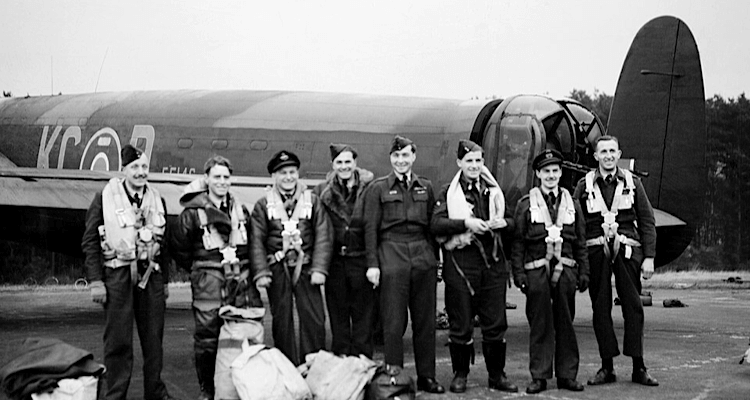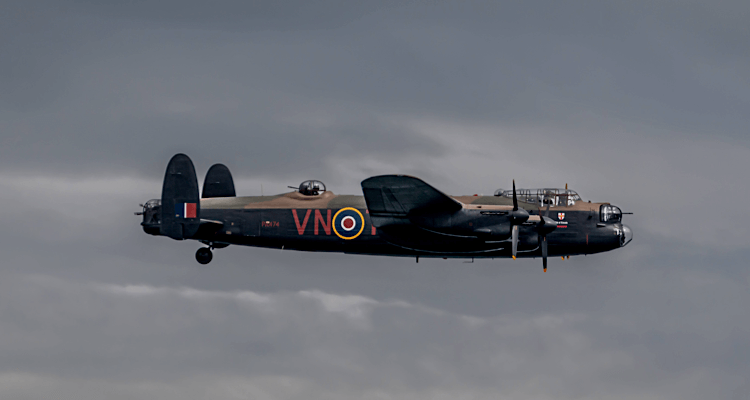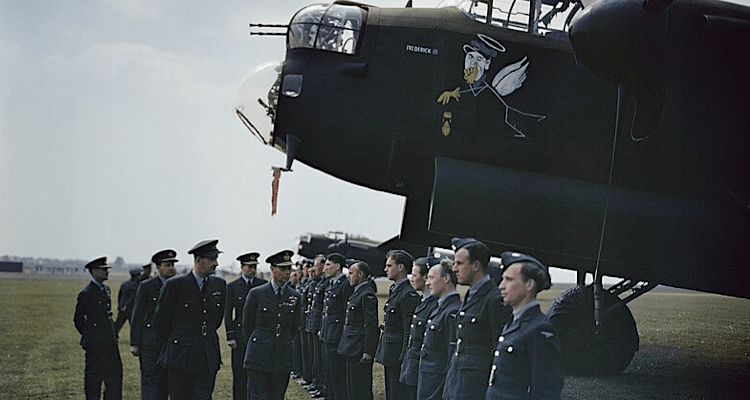
Dambusters 80th Anniversary – reliving the night of the 16th May 1943
The 16th May 2023 marks the 80th anniversary of the most famous single air raid of World War Two, “Operation Chastise”, better known as the Dambusters Raid. We look back on the story behind the daring Dambusters.
Barnes Wallis, his famous ‘Bouncing Bomb’ and the Dambusters
This top-secret mission was the brainchild of Barnes Wallis. The engineering genius invented and developed what was famously to become known as the ‘bouncing bomb’. These special explosive ‘mines’ were designed to be used to break three dams in Germany’s Ruhr Valley – the Möhne, Eder and Sorpe. The plan was to flood the industrial area downstream of the dams at the centre of Nazi wartime steel production.
Because of their great importance to the German war machine, the reservoirs were defended by anti-aircraft guns and torpedo nets. In 1943 no bombs large enough to destroy the dams existed. Even if they did, no aircraft was big enough to carry them.
Destroying German dams – the Dambusters’ targets
Barnes Wallis realised that if a smaller amount of explosive was dropped into the reservoir at the base of the dam wall, the weight of the water would help to break the dam. With this in mind, he developed spinning cylindrical bombs. They could literally bounce across the water, over the torpedo nets and roll down to the base of the dams.
Perhaps not surprisingly, there was a fair amount of scepticism among the British authorities. Would this highly unusual and audacious plan work? Many early tests ended in failure, but eventually the design of the bouncing bomb was perfected.
But then the scale of the next set of challenges became clear. Incredibly, the mines would need to be dropped at a steady speed of 240mph, at a height of just 60 feet above the water. And all in darkness, above enemy territory.
The creation, training & flying skills of 617 Squadron
The high level of flying and navigational skill required to make the mission a success, meant forming a special new squadron – the now legendary 617 Squadron. As leader of the squadron, 24-year-old Wing Commander Guy Gibson picked the very best aircrew could within RAF Bomber Command. They came from Britain, Canada, Australia, New Zealand and the US.
Due to the secrecy, the assembled aircrews were unaware of the exact nature of their mission. In the weeks leading up to May 1943, the squadron practised flying ever faster and ever lower, using sites such as Ladybower and Derwent reservoirs in Derbyshire. Once they had mastered all this in daylight, they then repeated their training at night.
Arming the Avro Lancaster for the bombing mission
Last but not least, this daring mission needed a large and powerful aeroplane capable of carrying the bouncing bombs and dropping them precisely – all whilst flying at top speed. Fortunately the Avro Lancaster, with its four Rolls Royce Merlin engines, had already proven itself as the RAF’s sturdiest and most reliable bomber.
A small number of Lancaster aircraft were modified to carry Barnes’s bouncing bombs. This included the installation of a special mechanism to spin the cylindrical bombs before release.
The night of Operation Chastise
The date was set. The night of the 16th May 1943. At 21:28 the first of 19 Lancasters and 133 crew set off from RAF Scampton on its most daring and secretive mission.
Thanks to the boldness of the plan and the skill and bravery of the aircrew, the raid was successful in destroying two of the dams and damaging the third. The subsequent floods destroyed a lot of Nazi industrial infrastructure, including hydroelectric powerplants. This disrupted war production for many months.
However, the human cost of the raid was high, with well over 1000 casualties in the flooded valleys. Of the 19 Lancasters that set out on that night, only 11 returned. Fifty-three crew were killed and three taken prisoner. The airmen all became heroes and for his actions, Guy Gibson was awarded the Victoria Cross, Britain’s highest military honour.
A turning point in the Second World War
Once news of the Dambusters’ daring raid broke, it was a huge morale booster for the British people. It marked the beginning of the Allied fightback against Nazi Germany.
And of course, the operation became the basis for probably the most popular British war film of all time – the classic ‘Dambusters’ of 1955.
Commemorating the Dambusters 80th Anniversary in 2023
The 80th Anniversary of the Dambusters raid will be marked with various events around the country. These include flypasts, special Dambuster tours at the IWM Duxford and RAF Benevolent Fund charity events too. The RAF Cosford Air Show on the 11th June 2023 will commemorate the 80th anniversary of the daring mission.
Into The Blue also pays homage to the incredible skills of the Dambusters, with passenger flights in over the Peak District including Derwent Dam, where 617 squadron practised their high-speed, low-level flypasts.
Dambuster flights now booking with Into The Blue:
Brilliant Tiger Moth Dambuster flights




